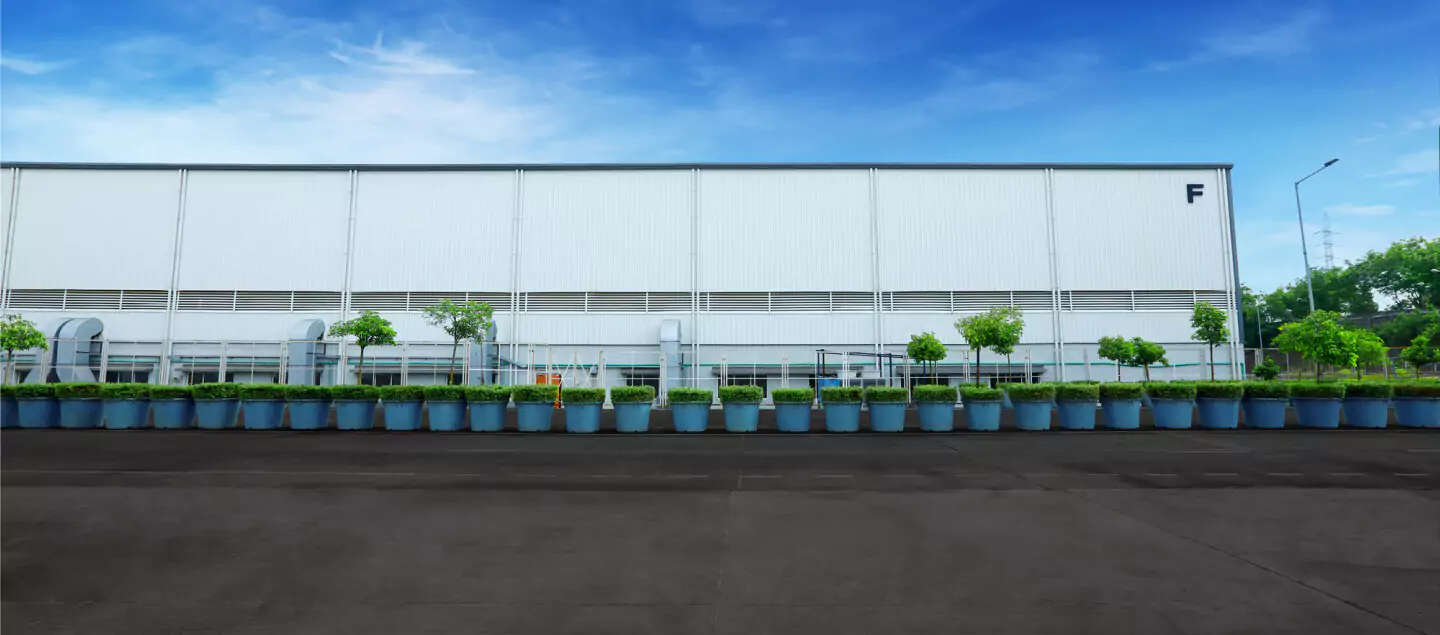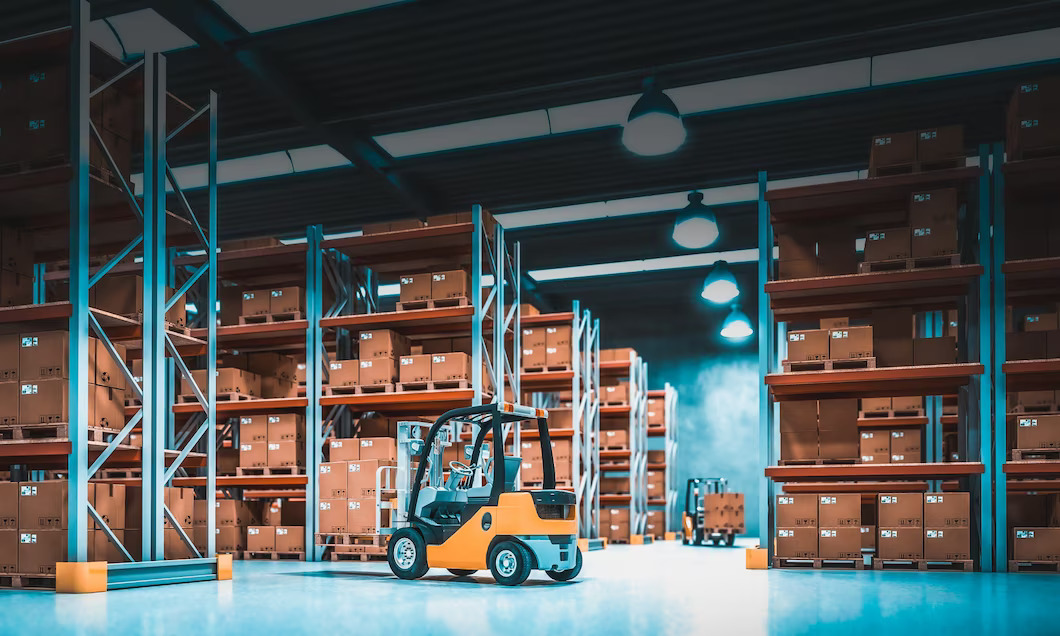The Future of Warehouse Development: Innovations and Trends

Top 3 Warehouse Design Innovations and Trends to Watch Out for
Today’s dynamic industrial environment is a significant challenge for modern warehouse development, where effective space utilisation, sustainability, and regulatory compliance become crucial factors. Increased internet shopping necessitates strategically placed, large-capacity warehouses, frequently close to urban centres.
Maintaining simplified processes while also optimising the use of space can be a complex challenge to tackle. Creating sustainable designs that are also cost-effective, environmentally friendly, and energy-efficient is yet another challenge. Furthermore, it is essential to ensure compliance with safety, labour, and environmental requirements, while also factoring in the labour constraints, automation integration, logistics for last-mile deliveries, and real-time inventory management.
Warehouse development is a multifaceted endeavour that calls for innovation, technology adoption, and a dedication to meet the changing consumer and regulatory expectations. To thrive, warehouse developers must navigate these challenges while managing costs and constructing resilient supply lines that can adapt to disruptions, without compromising on their digital and physical security. Here are some popular trends the sector has been noting.

Trend 1: Considering the Human Element in Warehouse Development
In warehouse operations, safety and ergonomic concerns come first.
Workers are the backbone of a functioning warehouse, but it is important to acknowledge that the warehouse is one of the most hazardous places for the workers to be in. Employees in warehouses are constantly exposed to various dangers, including the proximity to heavy equipment, harmful chemicals, falling objects, and moving vehicles.
Moreover, the tools and equipment used in warehouses, if not ergonomically designed, can pose a different type of risk to workers. This can lead to improper handling, awkward postures, and overexertion, all of which contribute to the development of musculoskeletal disorders (MSDs) over time. Conditions like carpal tunnel syndrome, tendonitis, and back injuries are all a result of poor ergonomic design, which forces workers into repetitive motions and causes them to exert more force than necessary.
Ergonomic concerns go beyond just physical discomfort. Inefficient layouts or poorly designed workstations can make workers take longer paths – thus using more effort than required – resulting in increased fatigue. Cluttered, narrow aisles or improperly placed equipment can elevate the risk of accidents, including trips, falls, or collisions with equipment. Additionally, inadequate lighting or improperly positioned screens can strain workers’ eyes.
Apart from jeopardising human life, a non-ergonomic warehouse is unsustainable in more ways than one. You are looking at overtime wages for inefficient operations as well as an increase in the rate of time-offs and medical claims. An unsafe warehouse further depreciates morale of the workers, contributing vastly to the overall productivity of the warehouse. All of which comes at a cost. Literally.
Hence, prioritising ergonomic considerations in warehouses is not only a matter of employee welfare but also a smart business decision.
To overcome this, upskilling and training workers in the best practices for handling machinery, equipment and other high-hazard situations can help streamline human efficiency and reduce risk of injuries in the premises. In the post-COVID era especially, introducing technology to automate the repetitive and menial aspects of the supply chain, deploying intelligent management systems that can oversee, detect and also predict critical events have changed the face of warehousing propelling it way ahead than what it was just mere years ago. These initiatives have led to the rise of the idea of a lean warehouse, where every automatable is handled by smart robotics, leaving the human personnel free to direct their competencies towards other areas of operations.
Trend 2: Incorporating Sustainable and Green Building Practices for Warehousing
Due to its many advantages, sustainability in warehouse development is not only essential from a compliance perspective but also beneficial for businesses in the long run.
- Energy-efficient lighting, like LEDs, cost less and consume less energy. They have further been known to improve working conditions by reducing shadow patches and relieving eye strain.
- Green materials reduce environmental consequences, sure. But they also go a long way in enhancing liveability, contributing to the positiveness of the work environment. For example, low-VOC paints, sustainable wood, and eco-friendly insulation minimise harmful emissions and help improve the indoor air quality, making it healthier for the occupants.
- Rainwater harvesting helps conserve water supply.
- Setting up EV stations is a great way to drive cleaner mobility. In the long run, the air quality stands to improve as well due to less reliance on fossil fuel vehicles.
- Initiatives to reduce waste – such as reusing packing material or using biodegradable alternatives – lower waste disposal costs and minimise contribution to landfills.
- Natural ventilation lowers HVAC energy use, facilitating circulation of natural air which is another important factor in making a space liveable and positive.
Along with reducing the environmental impact, the above-mentioned initiatives demonstrate significant cost savings, ensure regulatory compliance, improve corporate reputation, and create an appealing and healthy workplace.
Trend 3: Infrastructure and Amenities
To ensure effective operations and enhance safety, modern warehouses are furnished with cutting-edge infrastructure and amenities.
Grade A warehouses are enablers of technology. IoT sensors, RFID tracking, automated storage and retrieval systems (AS/RS), and warehouse management systems (WMS) play pivotal roles in optimising storage capabilities, reducing human errors, and streamlining operational flow. These innovations not only boost productivity but also contribute to cost-effectiveness and real-time inventory management. Furthermore, Grade A warehouses take a holistic approach to infrastructure and amenities right from the design stage. This includes incorporating high ceilings that enable efficient vertical storage, multiple loading docks for smooth logistics, and configurable racking systems to maximise space utilisation factored into the design right from the start.
Beyond application of technology and automation, however, Grade A warehouses prioritise the comfort and well-being of employees too. Trends in warehouse design include on-site offices providing convenience for administrative tasks as well as break facilities and well-maintained restrooms with showers cater to the physical and sanitary needs of the workforce. Adequate parking and canteens further enhance the overall work experience.
Finally, safety and security are a concern that has never changed. Access control systems and round-the-clock CCTV camera surveillance add an extra layer of protection to these facilities. Grade A warehouses are equipped with robust fire safety systems, first-aid facilities, and well-defined emergency response procedures, ensuring that the safety of both personnel and inventory is never compromised.
On the Horizon…
In conclusion, the warehouse industry is poised to have an exciting and promising future. The need for durable and adaptive warehousing solutions is increasing as global supply chains become more complicated and encounter unprecedented unpredictability. This need creates opportunity for new ideas and techniques, changing the warehouse landscape into a dynamic area rich with creative possibilities.
Grade A warehouses by Horizon Industrial Parks stand out as the most optimal solution to meet these evolving demands. They represent the forefront of innovation and adaptability, offering state-of-the-art infrastructure, cutting-edge technology, and employee-centric amenities. We look at warehouses as not just places to store goods, but as comprehensive ecosystems designed for efficiency, safety, and sustainability. As the warehousing industry adapts in tandem with modern business needs, our Grade A warehouses step in like a blueprint to make your logistics seamless. While redefining what it means to be the best, they also make it one less thing on your plate.